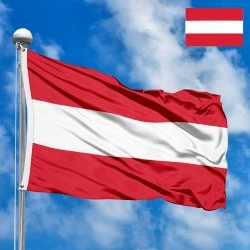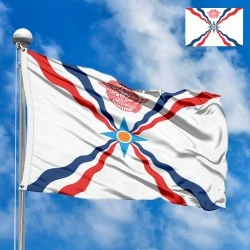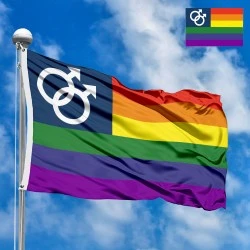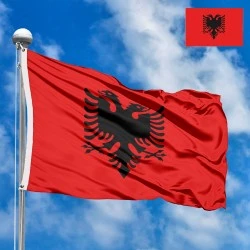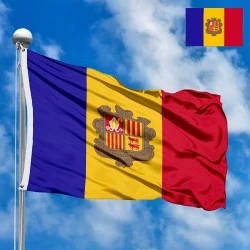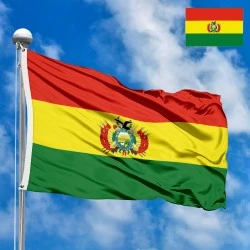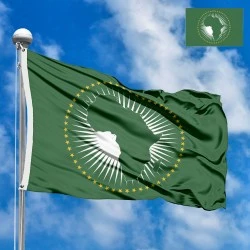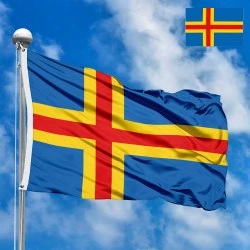- All Flags
- Flags of Countries by Continent
-
Flags of Organizations
- Flags of UN countries
- Flags of the European Union countries
- Flags of NATO countries
- Flags of the countries of the Organization of Islamic Cooperation
- Flags of the countries of the Organization of American States
- Flags of the Arab League countries
- Flags of the African Union countries
- Flags of the countries of the Union of South American Nations
- Flags of the Commonwealth of Nations
- Flags of the countries of the Secretariat of the Pacific Community
- Flags of the Nordic Council countries
- Flags of the Caribbean Community
- Flags of the countries of the Association of Southeast Asian Nations
- Flags of the East African Community
- Flags of the countries of the Organization of Turkic States
- LGBT Community Flags
- Historical Flags
- Ethnic Flags
- Flags of the USA (states)
Description
The National Flag of Austria with the Federal Coat of Arms
The national flag of Austria, with its striking red-white-red triband and the distinctive federal coat of arms, stands as a profound symbol of the nation's rich history, enduring spirit, and commitment to democratic values. It is not merely a piece of cloth but a vibrant narrative woven through centuries of challenges, triumphs, and the continuous evolution of a unique European identity. Recognized globally, this flag embodies the very essence of Austria, representing its people, its land, and its journey towards sovereignty and prosperity.
Design, Dimensions, and Color Arrangement:
The fundamental design of the Austrian flag consists of three equally wide horizontal stripes: a red stripe at the top, a white stripe in the middle, and another red stripe at the bottom. This red-white-red pattern is one of the oldest national flag designs in the world, with its origins dating back to the 13th century. The ratio of the flag's height to its length is typically 2:3, a standard proportion for many national flags, ensuring a balanced and aesthetically pleasing display.
When the flag is used by government authorities, it incorporates the federal coat of arms centered on the white stripe. The coat of arms is a majestic black eagle, displayed with its wings outstretched, symbolizing sovereignty and strength. This single-headed eagle is armed (beak and talons are golden/yellow) and langued (tongue is red). On its head, the eagle wears a golden mural crown with three visible turrets, representing the middle class or bourgeoisie. In its right talon, the eagle clutches a golden hammer, symbolizing the industrial working class, and in its left talon, a golden sickle, representing the agricultural working class or peasantry. Significantly, broken iron chains encircle both of the eagle's talons, symbolizing Austria's liberation from Nazi occupation after World War II. The eagle's chest is adorned with a red shield, crossed by a silver (white) fess (horizontal band), known as the Bindenschild. This escutcheon is the traditional emblem of Austria and is derived from the original red-white-red colors. The precise colors of the flag are often specified by exact Pantone or CMYK values to ensure consistency in official reproductions. The red is a vivid, deep shade, and the white is a pure, unblemished hue, creating a strong contrast that enhances the flag’s visibility and symbolic impact. The black of the eagle is deep and solid, contrasting with the vibrant gold of its attributes and the stark white of the background. The placement of the coat of arms is meticulously designed to ensure it is prominent and legible without overwhelming the simplicity of the red-white-red field.
History of the Flag's Creation and Adoption:
The history of the Austrian flag is steeped in legend and historical fact, making it one of the oldest and most fascinating national symbols. The most popular legend attributes its origin to Duke Leopold V of Austria during the Siege of Acre in 1191, part of the Third Crusade. According to the tale, after a fierce battle, Leopold's white tunic was completely covered in blood, except for the part that was protected by his belt. When he removed his belt, a white stripe was revealed between two blood-red areas. Impressed by this sight, Emperor Henry VI granted him the right to use these colors as his banner.
Historically, the red-white-red Bindenschild can be traced back to the Babenberg dynasty in the 13th century. Duke Frederick II of Austria, the last of the Babenbergs, adopted these colors in 1230 as his personal coat of arms, symbolizing his desire for greater independence from the Holy Roman Empire. This marked a significant departure from the traditional imperial colors and firmly established red and white as the colors associated with Austria itself, rather than a specific ruling family.
Over the centuries, as the Habsburg monarchy rose to power, the imperial flag often featured a black double-headed eagle on a gold field. However, the red-white-red ensign continued to be used by some military units and as a civil flag. In 1786, Emperor Joseph II officially recognized the red-white-red as the civil ensign for all Austrian ships.
The modern form of the flag, particularly with the coat of arms, has a more recent history. Following the collapse of the Austro-Hungarian Empire after World War I, the First Austrian Republic was established in 1918. A new state emblem was urgently needed for the peace talks. On October 31, 1918, a provisional coat of arms was designed by Chancellor Karl Renner, featuring symbols representing the new republic's social classes: a black tower for the bourgeoisie, crossed hammers for workers, and a wreath of wheat for farmers. This initial design was widely criticized for its poor aesthetic.
On May 8, 1919, a revised, and largely the current, coat of arms was officially adopted. This version reinstated the traditional single-headed eagle, a symbol of Austrian sovereignty, with the red-white-red escutcheon on its chest. The mural crown, hammer, and sickle were added to represent the bourgeoisie, industrial workers, and farmers, respectively, signifying the unity of all social classes in the new republic. The broken chains, however, were not part of the 1919 design.
During the period of Austrofascism (1934-1938), the red-white-red flag remained, but its symbolism was reinterpreted, and other emblems were sometimes used. With the Anschluss (annexation) by Nazi Germany in 1938, the Austrian flag was suppressed, and the Nazi swastika flag became the official emblem.
After the liberation from Nazi rule in 1945, the Second Austrian Republic was proclaimed. On May 1, 1945, the red-white-red flag and the coat of arms of 1919 were officially restored. A crucial addition was made to the coat of arms at this time: the broken chains. These chains were explicitly added to symbolize Austria's liberation from the Nazi regime and its renewed independence. This significant alteration firmly embedded the country's wartime experience and its triumphant return to sovereignty into its national symbol. The Bundesverfassungsgesetz (Federal Constitutional Law) of 1984 reaffirmed the flag and coat of arms in their current form, solidifying their legal status and significance.
Meaning for the Inhabitants:
For the people of Austria, the flag is much more than just a national emblem; it is a powerful symbol of identity, history, and shared values. The red-white-red colors evoke a deep sense of patriotism and national pride. The legend of Duke Leopold V, while a romanticized origin, is widely known and contributes to the emotional attachment many Austrians have to their flag, linking it to ancient bravery and sacrifice.
The red color is generally interpreted as representing the blood shed by Austrians in their struggle for independence and freedom, as well as courage, strength, and vitality. The white stripe is seen as symbolizing purity, peace, and honesty. Some interpretations also suggest the white stripe represents the Danube River flowing through the country. Together, the colors are a constant reminder of the nation's historical journey, from medieval duchy to modern republic.
The federal coat of arms, placed prominently on the state flag, adds layers of contemporary meaning. The single-headed eagle, once a symbol of imperial power (albeit in a double-headed form under the Habsburgs), now signifies the sovereignty and independence of the Austrian Republic. The mural crown, hammer, and sickle emphasize the unity and equal importance of all social strata—the urban middle class, the industrial workers, and the farmers—in building and sustaining the nation. This inclusion consciously differentiates it from historical monarchical symbols and underscores the republican ethos of solidarity and collective effort. Most poignantly, the broken chains are a vivid and undeniable testament to Austria's liberation from Nazi oppression and its steadfast commitment to freedom and democracy. They serve as a constant reminder of the darkest period in recent history and the triumph over tyranny, reinforcing the nation's resolve to never again fall under such a regime.
The flag, therefore, represents national unity, the spirit of resilience, and the democratic principles upon which the modern Austrian state is founded. It is displayed with reverence on national holidays, at official ceremonies, and by citizens during sporting events or other expressions of national pride. Its presence evokes a collective memory of the past and a shared vision for the future, fostering a strong sense of belonging among Austrians.
Interesting Facts:
-
One of the Oldest Flags: The Austrian flag is often cited as one of the oldest national flag designs in continuous use by a modern state, with its red-white-red colors dating back to at least the 13th century. This makes it older than many other prominent European flags.
-
Legendary Origin: The widely circulated legend of Duke Leopold V and his blood-stained tunic, while possibly apocryphal, provides a romantic and memorable origin story that deeply resonates with the Austrian identity.
-
Versatility of Use: The simple red-white-red tricolor without the coat of arms is the civil flag, used by citizens and on private buildings. The flag with the coat of arms is the state flag, reserved for government buildings and official use. This distinction is important and reflects the specific legal regulations governing flag display.
-
Symbolic Evolution of the Eagle: The eagle itself has undergone significant symbolic transformations. While the Habsburg monarchy used a double-headed eagle, symbolizing the dual nature of their empire, the single-headed eagle of the republic specifically avoids this imperial connotation and emphasizes the unified, independent Austrian state.
-
The Significance of Broken Chains: The addition of the broken chains in 1945 is a powerful and very specific historical reference, serving as a permanent memorial to Austria's liberation from Nazi occupation and its commitment to preventing a return to totalitarian rule. It’s a unique feature among national flags that directly references a post-war liberation.
-
"Bindenschild" Heritage: The Bindenschild, the red shield with the silver fess on the eagle's chest, is a direct link to the medieval coat of arms of the Duchy of Austria, highlighting the continuity of national symbols through different historical periods.
-
Constitutional Entrenchment: The design and use of the Austrian flag and coat of arms are enshrined in the Bundesverfassungsgesetz (Federal Constitutional Law), underscoring their legal and constitutional importance to the Republic of Austria.
-
Absence of Religious Symbolism: Unlike some national flags that incorporate religious symbols, the Austrian flag's design, even with its legendary origins, is primarily secular and historically rooted in military and dynastic heraldry, and later adapted to represent modern republican values.
The Austrian flag, therefore, is a dynamic and evolving symbol, reflecting the nation's past, present, and aspirations for the future. Its design, steeped in legend and refined by history, continues to unite and inspire the Austrian people.
In the demonstration images, full-size flags are shown with proportions of 2:3, and hand-held flags with proportions of 1:2.
Donation
Download
Completely free for commercial and non-commercial use (public domain).
You can freely use them in your news magazines, websites, software, mobile applications.
We appreciate a backlink to https://flagssite.com
Raster files - Flag of Austria with coat of arms (PNG, JPG)
 Waving flag
Waving flag
- PNG format (transparent background), 72dpi, dimensions in Pixels (px), aspect ratio 3:4.
- 15х20 px
- 30х40 px
- 60х80 px
- 120x160 px
- 240x320 px
 Sizes:
Sizes:
"v15" - image size (by height); if necessary, replace with available: v15, v30, v60, v120, v240.
!!! For resizing, use the Latin (eng) keyboard layout.
<img src="https://flagssite.com/flags/v15/20244.png" alt="Flag of Austria with coat of arms">
 Round flag
Round flag
- PNG format (transparent background), 72dpi, dimensions in Pixels (px), aspect ratio 1:1.
"d15" - image size (diameter); if necessary, replace with available: d15, d30, d60, d120, d240.
!!! For resizing, use the Latin (eng) keyboard layout.
<img src="https://flagssite.com/flags/d15/20244.png" alt="Flag of Austria with coat of arms">
 Rectangular flag 2:3
Rectangular flag 2:3
- JPG format, 72dpi, dimensions in Pixels (px), aspect ratio 2:3.
"h30" - image size (by height); if necessary, replace with available: h15, h30, h60, h120, h240, h360, h480.
!!! For resizing, use the Latin (eng) keyboard layout.
<img src="https://flagssite.com/flags/h30/20244.jpg" alt="Flag of Austria with coat of arms">

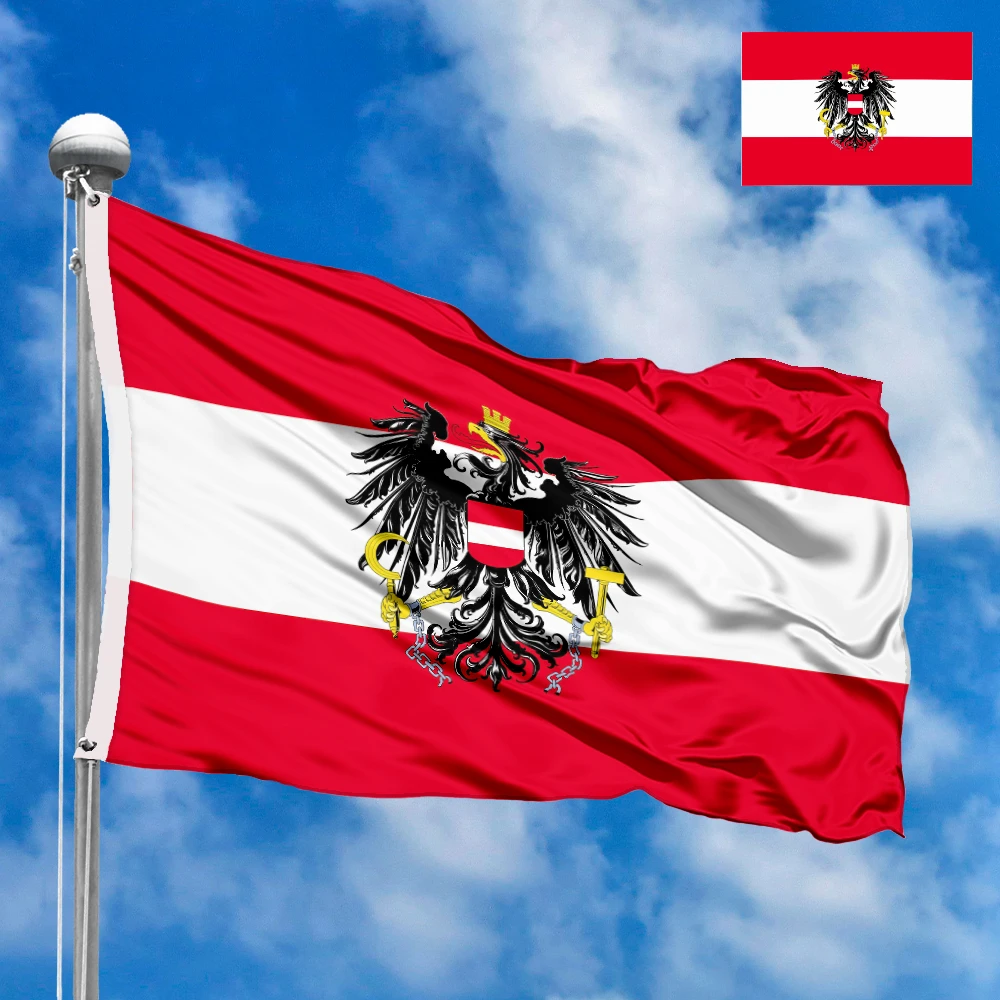
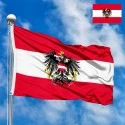
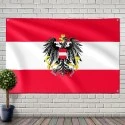


 Sizes:
Sizes:
 Sizes:
Sizes:
